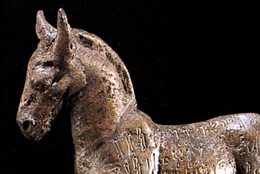
Collection of the objects from The British Museum
The British Museum’s Department of Middle East houses a rich South Arabian collection, one of the most important outside Yemen. It includes over 800 antiquities from Yemen: inscriptions on stone blocks and metal plaques, sculptures, funerary stelae, altars and incense burners, silver and bronze coins, gold jewellery, seals, metalwork and pottery.
From the cultural, historical and linguistic point of view, it is a complete collection that includes material originating from all the kingdoms of the ancient South Arabia: Sabaʾ, Maʿīn, Qataban and Ḥaḍramawt. Thus, the British inscriptions document the four Semitic languages of South Arabia.
The British connection with Southern Arabia begins in 1838, with the acquisition of Aden by Commander Stafford B. Haines from Sultan Mahsin bin Fadl of Lahj and Aden. The ancient South Arabian collection of the British Museum developed after 1862 as a result of gifts and purchases from British political administrators and military officers based in Aden, who played a significant role in the recording and acquisition of antiquities, particularly from the area of the wādī Bayḥān and the wādī Markha.
The British Museum, faithful to its intellectual tradition, was particularly interested in acquiring inscriptions, a choice which contributed and coincided with the first attempts to read these inscriptions and include them in the Corpus Inscriptionum Semiticarum. Among the most interesting texts, the legal inscriptions from as-Sawdāʾ and the dedicatory bronze tablets from ʿAmrān are worth mentioning.
In 2002 the museum hosted the large travelling exhibition of Yemeni antiquities which were previously exhibited in Italy, Germany and France from 1997 onwards. As the title Queen of Sheba: Treasures from ancient Yemen illustrates, this was more than just an exhibition of antiquities.
The South Arabian collection of the British Museum has been catalogued within the European project MENCAWAR. About 300 inscriptions and 200 more anepigraphic objects are searchable in DASI.
Photos are courtesy of the British Museum.